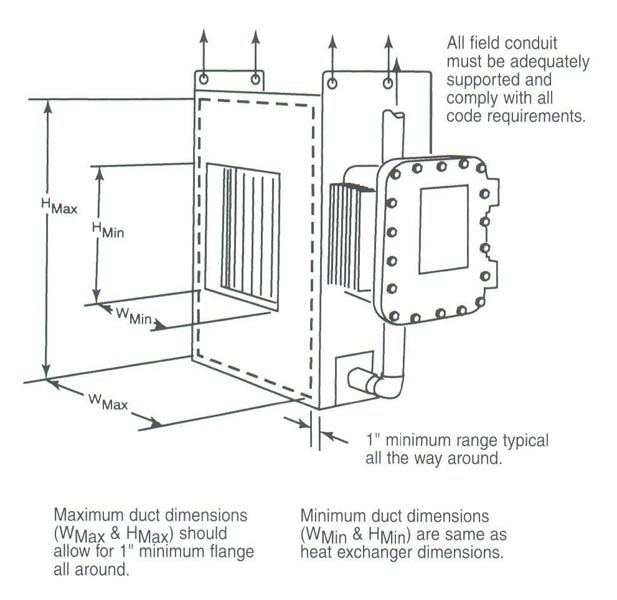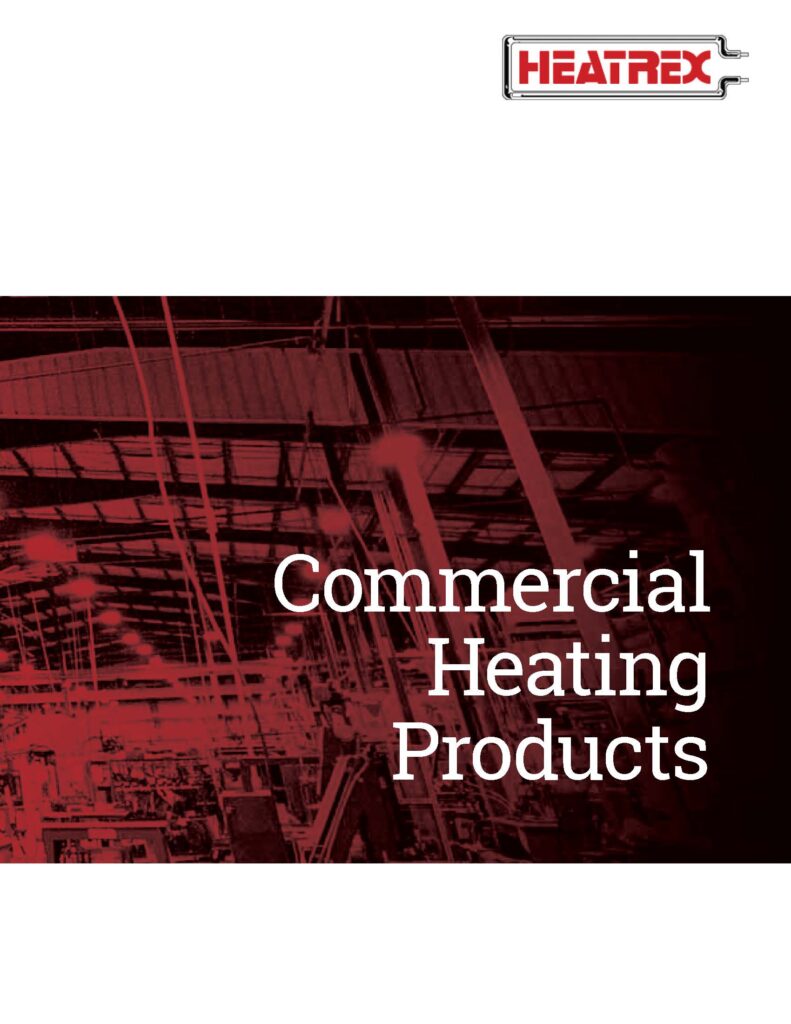227 Series Explosion-Proof Duct Heaters
CSA Approved for Class I, Division 2 locations where a hazardous gas is occasionally present. Ignition temperatures as low as 392°F (200°C) for ducts up to 240″ (610 cm) wide by 120″ (305 cm) high. Ratings up to 1000 kW, 600 volts.
Standard Features
Hazardous locations are those areas where a potential for explosion and fire exists due to the presence of flammable gases, vapors, pulverized dusts or ignitable fibers in the atmosphere. Hazardous locations are created from the normal processing of volatile chemicals, gases, coal, grains, etc., or from the accidental failure of storage systems for these materials.
Open flames are not permitted in these locations. The use of electric heating equipment is permitted with two major restrictions: 1) The surface temperature of the equipment cannot exceed the ignition temperature of the hazardous atmosphere and 2) all arc and spark producing devices must be isolated from the atmosphere in an appropriate enclosure.
Both people and equipment in hazardous locations can be heated safely and economically with electric heat. Electric heating is typically much less expensive to install and maintain than comparable remote oil or gas fired heating systems.
CSA Approved for virtually all Class I and Class II, Division 1 and 2 hazardous gas or dusty atmospheres
Ignition temperatures as low as 320°F (160°C)
Six standard sizes to fit a wide range of ducts with twenty four available sizes.
Ratings up to 240 kW, 600 volts
Temperature Control
Single Stage Control
For many lower KW applications, single stage on/off control is adequate. For higher KW ratings, solid-state SCR control is recommended.
Solid-State SCR Control
When temperature must be controlled precisely, or for larger kW heaters, built-in SCR’s are recommended. They are furnished with field-selected inputs of 2200 or 135 ohms, 0-10 VDC, or 4-20 mA. SCR’s have zero-cross firing to eliminate radio frequency interference.
To meet FM and CSA requirements, multi-unit designs (up to four heating units in series) also have controls set at 80°F (27°C) to limit the inlet air temperature to all but the inlet unit. These limit controls prevent excessive temperatures at the heater outlet as the inlet air temperature rises.




